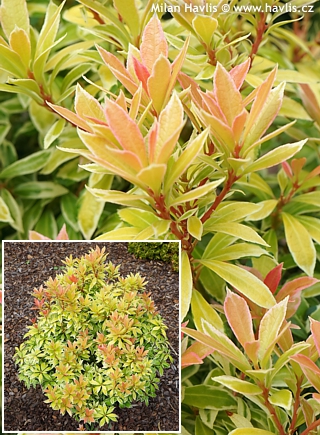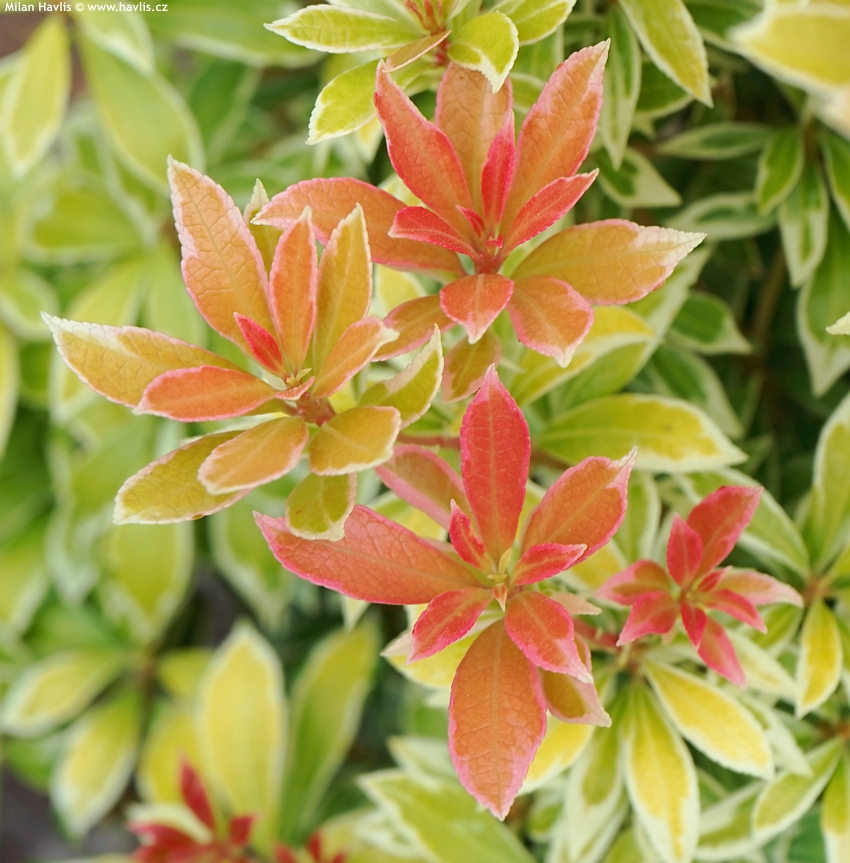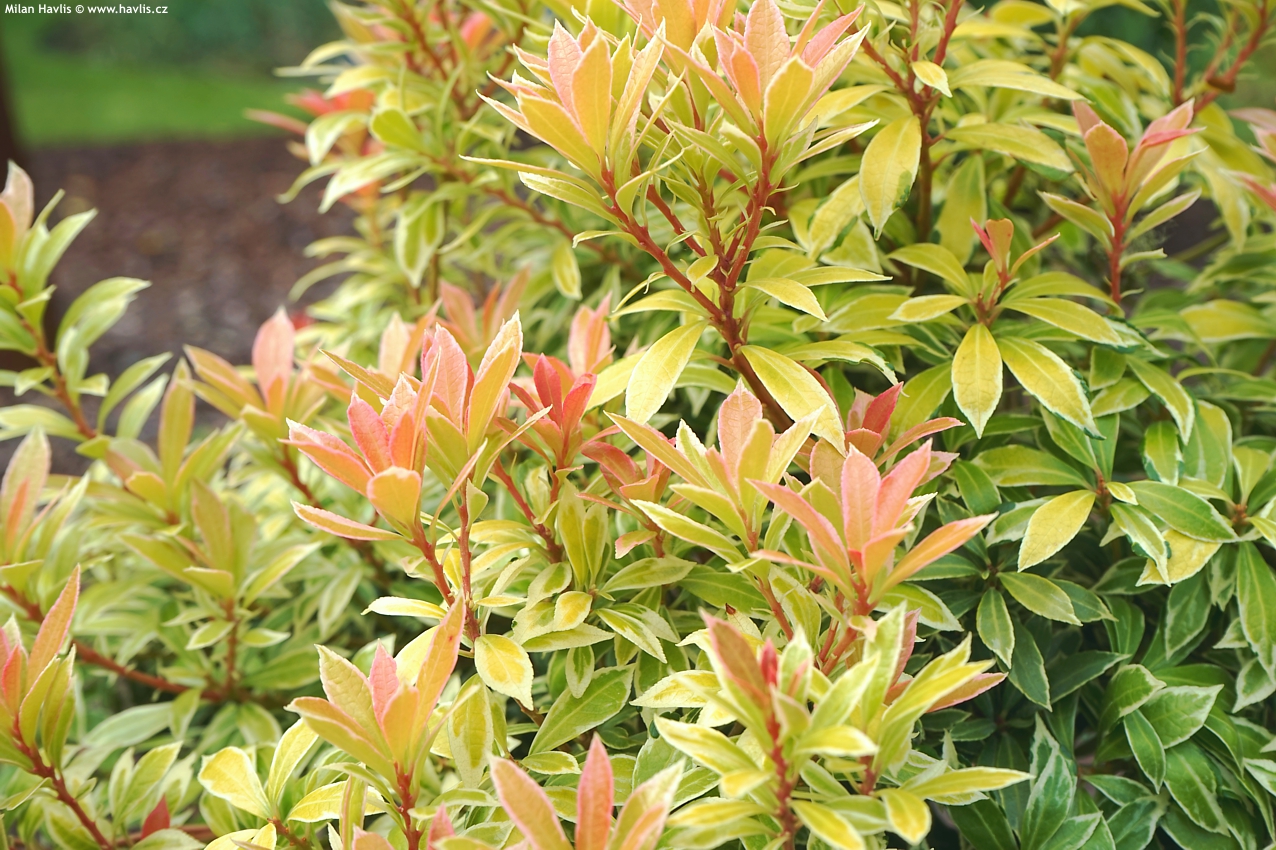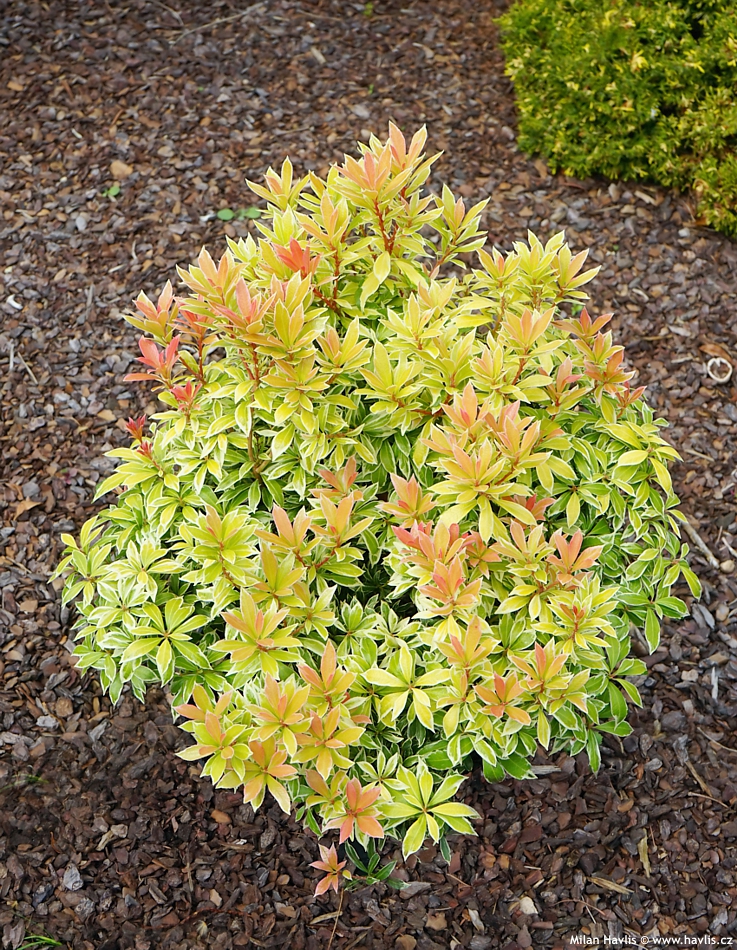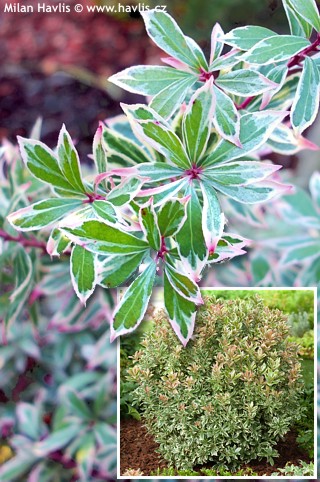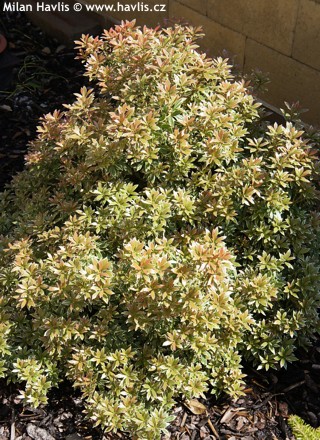Pieris japonica 'Opstal65' LITTLE GOLDY lily-of-the-valley shrub
Pieris
Lily-of-the-valley shrubs are very popular ericaceous plants with attractive foliage and abundant flowering. There are so many varieties already that you think it impossible that breeders could come up with a new one, distinctly different from the others. Ron van Opstal is a Dutch breeder whose achievements are mostly evergreen. No wonder that pieris is one of them.
LITTLE GOLDY is a dwarf lily-of-the-valley shrub that follows a success of its preceding variety Little Frosty. Its evergreen leaves are narrowly elliptic, short, acuminate, soft green with golden hues and white variegation at margins. In spring they emerge in several colours of fruit jams – first there is raspberry preserve, then strawberry jam, and finally apricot and orange marmalade.
LITTLE GOLDY is rather slow growing and makes a uniform, rounded, evergreen shrub which needs no pruning to remain handsome. Yet clipping and pruning is possible any time from spring until midsummer. The breeder mentions short clusters of white, urn-shaped flowers in early spring, however, we have not witnessed any yet, and possibly, just like some other dwarf pieris varieties, this one, too, might be a little shy when it comes to flowering. In any case, if the flowers do appear make sure to remove them soon after flowering to prevent production of seeds that exhaust the plant and make it look untidy.
Ericaceous plants require soil that is light, on the acidic side, and constantly moist (not wet). If your garden soil is too heavy do not dig a deep hole but make a shallow and wide bed topped up with a good mixture of peat, fine bark chips, and leaf mould. Keep the soil moist and protected from temperature swings by mulching. Slow-release fertilizers are advised. Pieris does best in sun or partial shade. Expected hardiness is about -27°C (USDA zone 5b).
Last update 11-06-2020

































